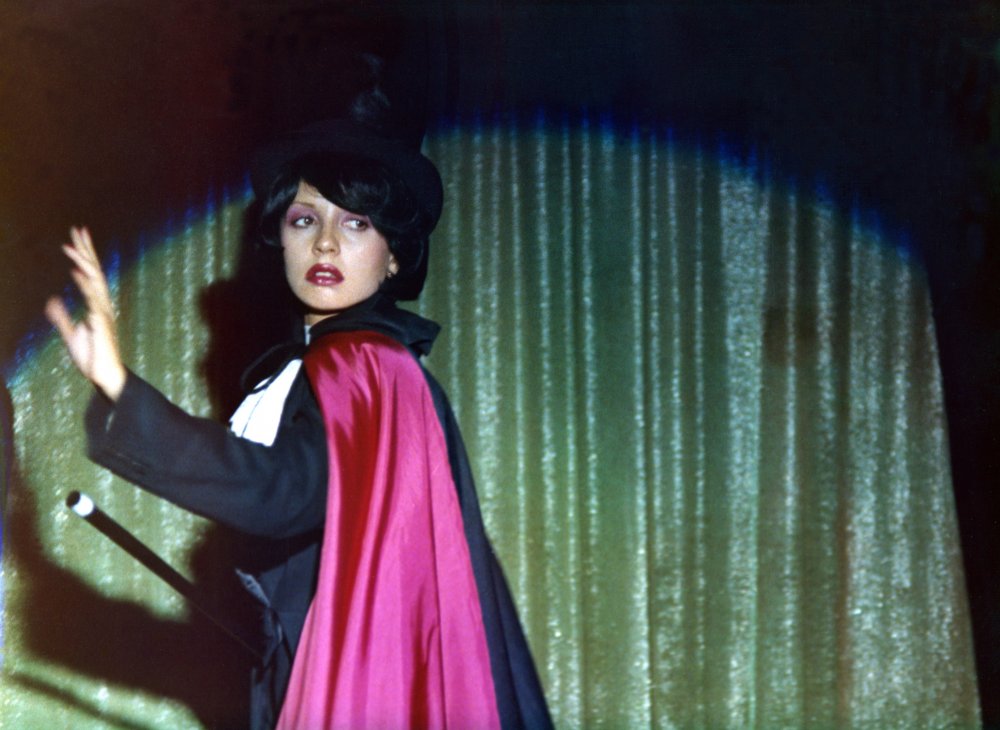‘Céline and Julie Go Boating’ Review: Candy Can Only Fuel the Memory of Few

Photo Courtesy of BFI
★★★★★
ABRACADABRA: Welcome to the Next Morning
Jacques Rivette placed his rather prodigious and lavish hands on the scope of cinema with a concealed desire. An impulse — with the proclivity to champion the abstract themes conjoined with their emblematic counterparts. He enchanted the uniformities of a simplistic artistic expression. Mr. Rivette imposed his steely-eyed vision which indelibly evolved and flowed through the altering tides of independent movements. Inherently — he made for the conceptual interlock between the prized aesthetics which formulated narratives that are both sumptuous and enlightening. His tales inhabit the consolations of familial comfort as well as the ebbing and flowing of an augmented bond between individuals. And the capability to harness the brute intensity of humanistic motifs may — most notably — be found through the steady progression of the genesis of heartfelt, bohemian reality within the 1974 project “Céline and Julie Go Boating.” Subtly — the underlying track of the tale alluringly impedes the enunciation of cliché subtexts and molds into one of the most beguiling viewing encounters.
With the infusion of the aforementioned subtextual peculiarities, Jacques Rivette’s narrative portends the shifting of surrealist visuals with unabashedly boisterous comedy. “Céline and Julie Go Boating” builds over the illustration of the two female protagonists as they maneuver through the echoing — pesky tides of postmodern illusions. Mr. Rivette’s film is a conjectured and seemingly fragmented battle of tit-for-tat through the lens of imagination. But “Céline and Julie Go Boating” encompasses a tale full of depth and perplexity. It’s the natural equivalent of being dropped within the confines of a steaming desert at twilight and told to find a fluorescent cactus — only to soon understand that all the information that’s been divulged is one dysfunctional red herring. Fundamentally, Jacques Rivette implants this pretensive clutch around the base of the narrative and proceeds to sling it through a world of unmitigated delirium. And consequently — every fragmented component splices quite magically.
Primarily — the element of “Céline and Julie Go Boating” that enchants the visual facets of the core plot is the usage of color. Every frame is complemented by a backdrop that is iridescently tinged and saturated with contours that embrace the more outlandish moods presented within the screenplay. The characters of Céline and Julie are constantly dressed in clothing that juxtaposes their backdrop. Contextually — the women dress in these light, glamorous shades of red and blue as they gracefully contradict the rather opaque, monochromatic tints revealed upon the walls of their houses. In addition — the film’s cognizance inverts this texture to indirectly deviate from a fairly prolonged tone. Mr. Rivette’s keen eye for color as the connective tissue between characters also gives way to some of the more entrancing subtleties of “Céline and Julie Go Boating.” Saturated contours such as the red blood or the green landscapes modify the intonations of the screenplay.
Additionally, the internally contrived structure of “Céline and Julie Go Boating” proves to be one of the most puzzling constituents of the plot’s development. Each altercation and confrontation seems to be an augmented formula of the underlying effects of “cognitive dissonance” and how it so comically molds the subconscious of a central individual. Thematically, the undertones traverse towards an all-mighty stylism, even — at times — infringing upon cubistic aesthetics. The film retorts the compulsive need from one to inhabit a near disparate lifestyle with even more amusing subplots — but they find the minute intricacies and craft their connotations to eccentric predicaments.

From a performing perspective — the limelight of the film’s narrative is fronted by two extraordinary portrayals of personified, idiosyncratic individualism. Juliet Berto (through the performance of Céline) and Dominique Labourier (through the performance of Julie) depict contrasting arcs but each entails the step-by-step progression of the “hero’s journey.” And while each of the emotional tendencies of the women is also disconnected — they display a harmonious window into the aspirations of one’s inquisitiveness.
And although a rather subdued component of “Céline and Julie Go Boating” is the score — Jean-Marie Senia’s orchestral configurations elicit the very ethereal, pungent undertones of Jacques Rivette’s film. Particularly within the denouement’s exhibition — Mr. Senia’s musicality emerges with lovely pockets of diegetic sonatas that dispatch the lush flavor behind the visual aura. Chiefly — the orchestral pieces are overlooked by the sublime sound of a piano as it harbors the last-licks of concern within the minds of the characters and transposes the fear with more mental solitude. Impeccably so — it exudes the subtle beauty of the Parisian suburbs clashing with the equivocal themes behind Céline and Julie’s deepest desires.
Strategically, the way Jacques Rivette embargos any semblance of normality throughout “Céline and Julie Go Boating” is just a testament to his ambition as a director. Similar to Ingmar Bergman’s “Persona” (1966) and it being an account on the merging of two women and their metaphysical perceptions as well as their palpable mannerisms — Mr. Rivette’s narrative generates a mystifying feel to how he circumvents authenticity and chronologically recollects hazy truths.
And in the case of David Lynch with a film such as “Mulholland Drive.” The film — similarly to that of Mr. Rivette’s “Céline and Julie Go Boating” — reveals the emotional whims of female protagonists as they find themselves combating transcendental convergence with no true sign, concurrently, of an antagonistic force.
And through the lens of the internal characteristics of both Céline and Julie — Jacques Rivette’s vision can be seen as a grandiose meditation on abstract expressionism meshed with the fine-toothed, vibrant and color-coded hue of pop art. It’s a film that so anticlimactically discusses quagmires with a comedic ambiance along with the ability to flip on a dime into a story full of utter cynicism. And the vision of Mr. Rivette only flows with more and more vibrancy as the tale progresses into an exemplary representation of painstaking artistry.
_________________________________________
Viewed on a DCP print at the art deco-inspired “Roxy Theater” in Tribeca.








